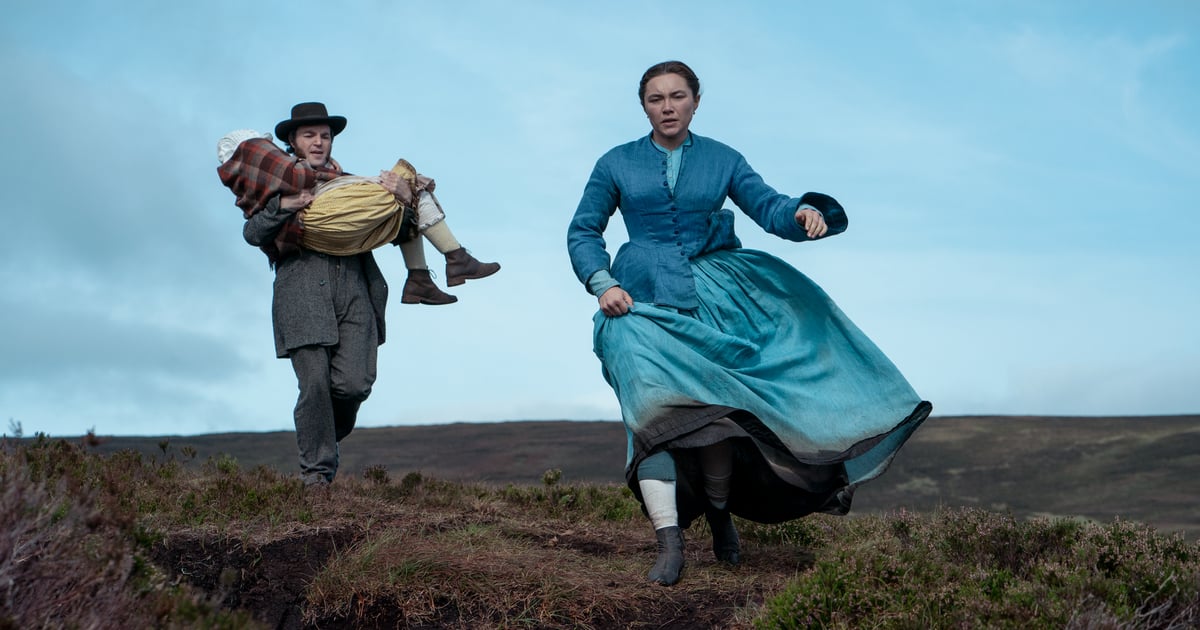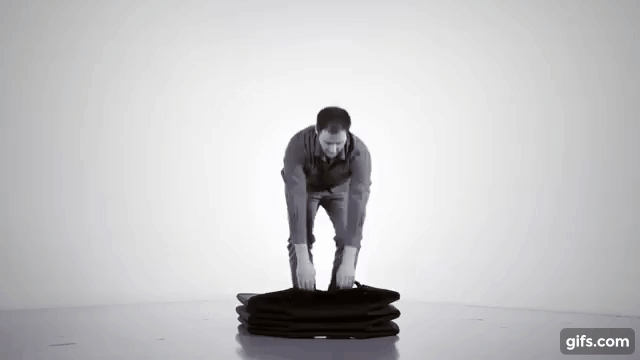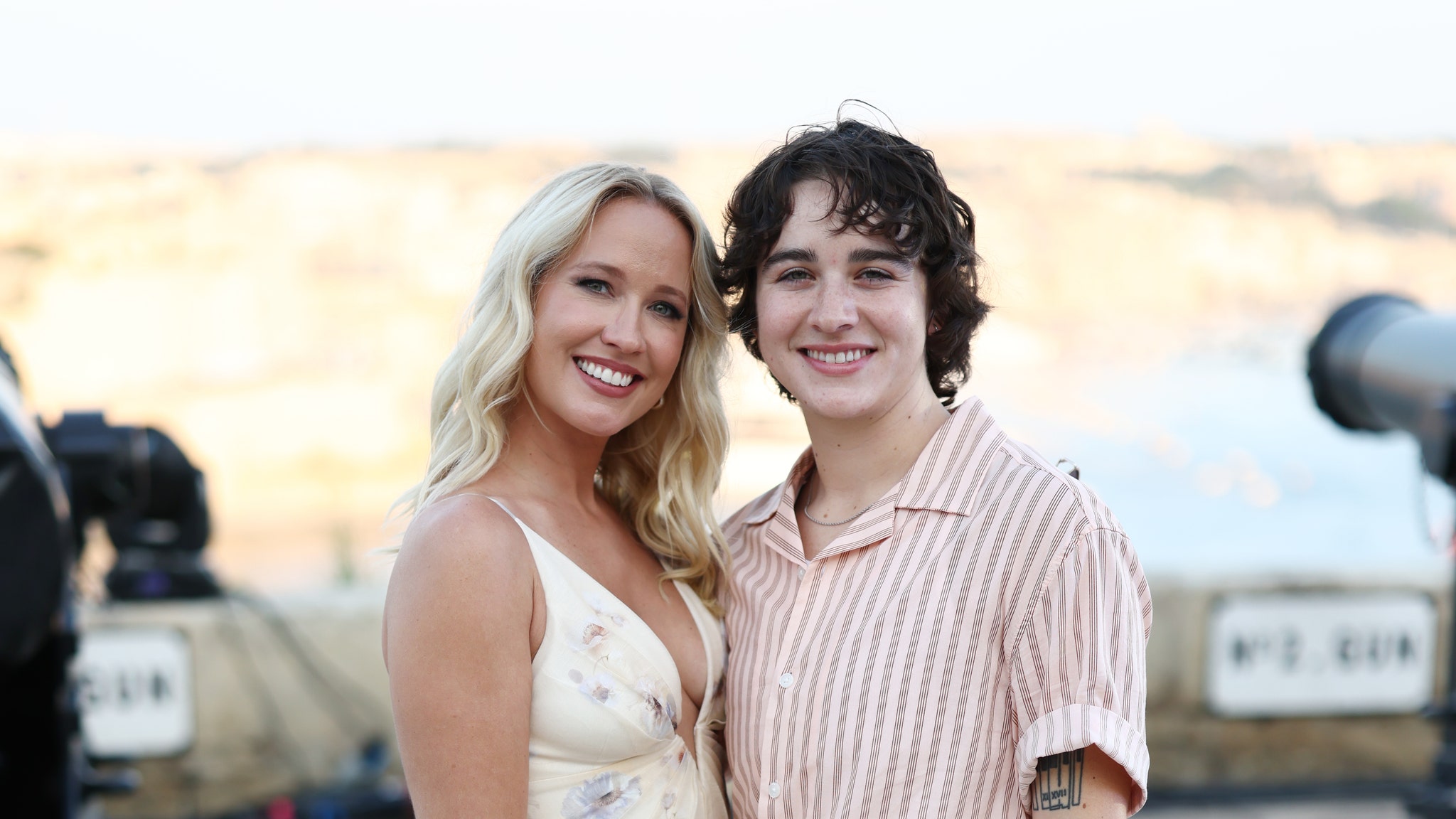The Fasting Girls Phenomenon Inspired Florence Pugh's "The Wonder"
Content warning: This article includes descriptions of eating disorders and disordered relationships with food. In the new movie "The Wonder," released in theaters Nov. 2, Florence Pugh stars as an English nurse, Lib Wright, tasked with watching over a young girl named Anna (Kíla Lord Cassidy) who allegedly hasn't eaten in four months. Anna claims that she only receives nourishment through manna from heaven, and Lib struggles as she watches the health of her young charge deteriorate as she refuses to eat, claiming it's penance for sin. "The Wonder" is not a true story, but it is inspired by true events that took place throughout Europe and North America. The phenomenon was known as the "fasting girls." Emma Donoghue, who wrote the book the film is based on, talked about her inspiration for the story in a 2016 interview with NPR. She called the girls a "recurring phenomenon." "Every now and then, in Western countries ranging from the US to Canada to Ireland to England, continental Europe, over, let's say, the 16th century to the 20th - every now and then, a young woman would hit the headlines for appearing to live without food," Donoghue explained. Donoghue says Lib and Anna's story was "entirely invented," though she took details from many of the real-life cases. "The Wonder" is set not long after the Great Famine in Ireland because Donoghue wanted to explore the idea of voluntary starving in the context of people who were forced to starve. Pugh's character was also inspired by history. Donoghue told NPR that in several of these cases, hired watchers were brought in to make sure the girls weren't eating. Lib's background as a nurse during the Crimean War, she says, is because nurses who served during that war were the ones who turned it into a well-respected profession. Fasting Girls and Religion Some saints during the middle ages were known for their fasting, including Angela of Foligno, Catherine of Siena, and Lidwina. The condition has been termed anorexia mirabilis, an eating disorder, which was seen as a holy way to mimic the suffering of Jesus when he died. During the Middle Ages, fasting and celibacy went hand in hand as a way to avoid gluttony and atone for sin. Even though the disorder is tied to religious belief, religious figures would oftentimes urge the women to eat, but they'd refuse. At the same time, many young Catholic girls studied the stories of these women because they were saints, which could have influenced the continuation of the phenomenon throughout the centuries. Real Fasting Girls There are quite a few documented cases of more modern fasting girls. In each case, it's unclear if they weren't eating food or if they were sneaking food secretly and only died when they could not keep up their ruse. The case most similar to the one in "The Wonder" is that of Sarah Jacob, a young girl living in Wales, born in 1857. She suffered an illness in 1867 and refused to eat after, per the National Library of Wales. Her parents vowed not to force her. The local vicar wrote about her story in the paper, and soon she had many visitors, often bearing gifts, just like Anna in "The Watcher." Four watchers were named to watch over her for two weeks, though they could not find evidence that she ate. But during the two weeks, under medical supervision, Sarah began to starve to death. Her parents refused to end the watch and have her eat. She died at the end of December, and her parents were sentenced to manslaughter. In another case, Mollie Fancher, born in Brooklyn in 1848, suffered two incidents as a teen that reportedly left her without the ability to see, touch, taste, and smell. She claimed she developed supernatural powers and that she did not eat. Her claims about fasting were never proven before her death. Her story was reported widely, including in a 1934 issue of The New Yorker. Similarly, Therese Neumann, born in Germany in 1898, was partially paralyzed after falling off a stool in 1918. She claimed she began fasting in 1923 and continued until her death in 1962, per Encyclopedia Brittanica. She also claimed to develop stigmata - wounds that mimic those had by Jesus on the cross. She claimed to have visions of Jesus and Saint Therese of Lisieux, the latter of whom she said cured her of her paralysis. In 1881, a New Jersey girl named Lenore Eaton also refused to eat and was touted as a miracle. She died after 45 days. Her story was documented in Joan Jacobs Brumberg's book "Fasting Girls." In Boston, fasting girl Josephine Marie Bedard was accused of being a fraud after a doctor claimed he found a doughnut in her pocket and that she stole some of his potatoes during lunch, according to Mental Floss. "The Wonder" streams Nov. 16 on Netflix.


Content warning: This article includes descriptions of eating disorders and disordered relationships with food.
In the new movie "The Wonder," released in theaters Nov. 2, Florence Pugh stars as an English nurse, Lib Wright, tasked with watching over a young girl named Anna (Kíla Lord Cassidy) who allegedly hasn't eaten in four months. Anna claims that she only receives nourishment through manna from heaven, and Lib struggles as she watches the health of her young charge deteriorate as she refuses to eat, claiming it's penance for sin.
"The Wonder" is not a true story, but it is inspired by true events that took place throughout Europe and North America. The phenomenon was known as the "fasting girls." Emma Donoghue, who wrote the book the film is based on, talked about her inspiration for the story in a 2016 interview with NPR. She called the girls a "recurring phenomenon." "Every now and then, in Western countries ranging from the US to Canada to Ireland to England, continental Europe, over, let's say, the 16th century to the 20th - every now and then, a young woman would hit the headlines for appearing to live without food," Donoghue explained.
Donoghue says Lib and Anna's story was "entirely invented," though she took details from many of the real-life cases. "The Wonder" is set not long after the Great Famine in Ireland because Donoghue wanted to explore the idea of voluntary starving in the context of people who were forced to starve. Pugh's character was also inspired by history. Donoghue told NPR that in several of these cases, hired watchers were brought in to make sure the girls weren't eating. Lib's background as a nurse during the Crimean War, she says, is because nurses who served during that war were the ones who turned it into a well-respected profession.
Fasting Girls and Religion
Some saints during the middle ages were known for their fasting, including Angela of Foligno, Catherine of Siena, and Lidwina. The condition has been termed anorexia mirabilis, an eating disorder, which was seen as a holy way to mimic the suffering of Jesus when he died. During the Middle Ages, fasting and celibacy went hand in hand as a way to avoid gluttony and atone for sin. Even though the disorder is tied to religious belief, religious figures would oftentimes urge the women to eat, but they'd refuse. At the same time, many young Catholic girls studied the stories of these women because they were saints, which could have influenced the continuation of the phenomenon throughout the centuries.
Real Fasting Girls
There are quite a few documented cases of more modern fasting girls. In each case, it's unclear if they weren't eating food or if they were sneaking food secretly and only died when they could not keep up their ruse. The case most similar to the one in "The Wonder" is that of Sarah Jacob, a young girl living in Wales, born in 1857. She suffered an illness in 1867 and refused to eat after, per the National Library of Wales. Her parents vowed not to force her. The local vicar wrote about her story in the paper, and soon she had many visitors, often bearing gifts, just like Anna in "The Watcher." Four watchers were named to watch over her for two weeks, though they could not find evidence that she ate. But during the two weeks, under medical supervision, Sarah began to starve to death. Her parents refused to end the watch and have her eat. She died at the end of December, and her parents were sentenced to manslaughter.
In another case, Mollie Fancher, born in Brooklyn in 1848, suffered two incidents as a teen that reportedly left her without the ability to see, touch, taste, and smell. She claimed she developed supernatural powers and that she did not eat. Her claims about fasting were never proven before her death. Her story was reported widely, including in a 1934 issue of The New Yorker. Similarly, Therese Neumann, born in Germany in 1898, was partially paralyzed after falling off a stool in 1918. She claimed she began fasting in 1923 and continued until her death in 1962, per Encyclopedia Brittanica. She also claimed to develop stigmata - wounds that mimic those had by Jesus on the cross. She claimed to have visions of Jesus and Saint Therese of Lisieux, the latter of whom she said cured her of her paralysis.
In 1881, a New Jersey girl named Lenore Eaton also refused to eat and was touted as a miracle. She died after 45 days. Her story was documented in Joan Jacobs Brumberg's book "Fasting Girls." In Boston, fasting girl Josephine Marie Bedard was accused of being a fraud after a doctor claimed he found a doughnut in her pocket and that she stole some of his potatoes during lunch, according to Mental Floss.
"The Wonder" streams Nov. 16 on Netflix.






















